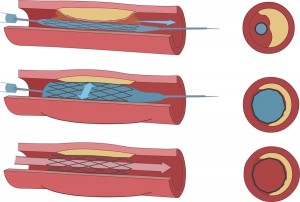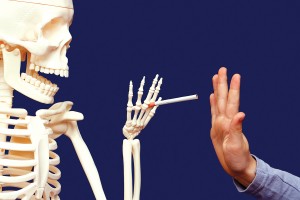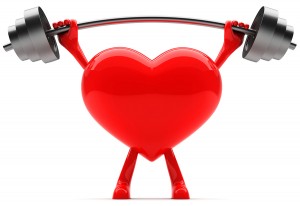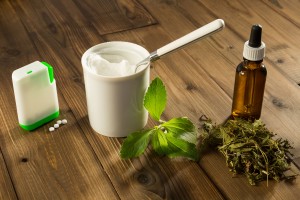Even though the Trial to Assess Chelation Therapy (TACT Study) has been published in March 2013 (Ref. 1), it still needs to make its way into the common public knowledge. The National Institute of Health was noticing an “alarming 68% increase” of chelation therapy between 2002 and 2007. These patients had problems with previous heart attacks and others had angina due to coronary artery disease, so they sought relief through intravenous chelation treatments. The purpose of the TACT study was to see whether chelation treatments with EDTA were safe and whether they would show any benefits when compared to a placebo group.
TACT study design
A total of 1708 patients were randomized into two groups, 869 treated with EDTA chelation therapy and 869 in treated with placebo infusions of normal saline/dextrose. Treatments were blinded (nobody knew what was given in the intravenous). 134 research sites in Canada and the US were involved in this trial including the Mayo Clinic. Patients had to be at least 50 years old, but the average age was 65 years. They had all a prior heart attack, but not less than 6 weeks before enrolment; on average they did have their heart attack 4.6 years before enrolment. Participants had to quit smoking at least 3 months before entering into the study and if they had revascularization procedures (bypass surgeries or stents), this had to be done more than 6 months in the past.
31% of the study population had diabetes. 83% had revascularization procedures done in the past. The majority of patients were taking heart medications (72% beta blockers, 73% statins to lower cholesterol and 84% aspirin to thin the blood).
65% completed 40 infusions, 76% completed at least 30 infusions.
The chelation infusion was the standard infusion usually used in chelation clinics, namely containing EDTA (the chelating agent), salts and vitamins as indicated in this Mayo clinic summary report. The follow-up period was for 4 years. There was a drop-out of 30% for various reasons and 17% refused their consent to carry on in the study.
Results of the TACT study
Overall mortality in the chelation group was down 2.8% versus the placebo group. Heart attacks in the chelation group were down 19.5%; strokes down 20% and hospitalization rates were down 28.6% when compared to the values of the placebo group.
Diabetic patients (the subgroup of 31%) appear to have greater benefits from chelation treatments than the non-diabetic ones. The diabetic group benefitted by 39% with regard to risk reduction (strokes, heart attacks, mortality) versus the non-diabetic chelation group (only a 4% reduction).
Perhaps as important as the results of the effect of the chelation study versus the placebo group was the fact that the side-effect profile was indistinguishable between the two groups. This establishes for the first time that chelation therapy is safe and that it also has beneficial effects.
It is interesting that when the results of the TACT Study were announced at the 2012 American Heart Association meeting in Los Angeles, the majority of cardiologists did not believe the results (that chelation was effective); instead they were looking for alternative explanations to explain the effect and suggested that this study needed to be repeated again.
What are the benefits of chelation therapy?
Originally EDTA was used to treat children with lead poisoning in Germany. However, workers who were exposed to lead containing paints in various industries also were described to have improve significantly with EDTA chelation (see this chelation history link).
In the 1990’s environmental concerns about heavy metal poisoning of the earth atmosphere came more into the forefront. This 2007 paper reports about heavy metal poisoning in detail.
A new concern for those who like organic food is the use of copper sulfate by organic food growers to spray against fungal and bacterial growth on crop as copper sulfate is one of the 5 chemicals used in organic agriculture approved by the USDA.
Those who consume organic foods may inadvertently expose themselves to copper in their system. This will reduce zinc levels as zinc naturally counterbalances the effects of elevated copper levels. But normal zinc levels are needed for normal body function, particularly in males.
As I have explained in this blog before, chelation therapy and several other methods can detoxify the body. Pollution continues to play havoc with our system and we need to consider taking steps to counteract that. In this blog I explained that we live in a toxic world and I mentioned several steps we can take to counteract this including chelation therapy. Particularly heavy metals like lead, mercury, cadmium and copper will be reduced in the blood by intravenous EDTA chelation treatments.
Conclusion
I felt that I should take some time explaining the carefully conducted TACT Study that was a randomized double blind, government sponsored study examining the effects of chelation treatments. It showed that there were significant improvements in terms of cardiovascular recovery, but it also showed that it was entirely non-toxic. Chelation should be done by an American College for Advancement in Medicine (ACAM) certified practitioner to ensure that you get the same chelation treatment as described in the TACT Study. People with heart conditions will need 30 to 40 treatments (usually 1 week apart) to improve. However, a person with a normal heart who considers detoxification will only need 10 treatments initially (twice per week or weekly), then one every three months for maintenance. We all reside on the same planet and are exposed to ongoing pollution and food toxicity. Due to this reality the topic of chelation and detoxification is worth some serious consideration not only for patients with heart health issues.
More information about vitamins and detoxification: http://nethealthbook.com/health-nutrition-and-fitness/nutrition/vitamins-minerals-supplements/
Reference: 1. J. American Medical Association (March 27, 2013, Vol. 309, No. 12)
Last edited Nov. 8, 2014















